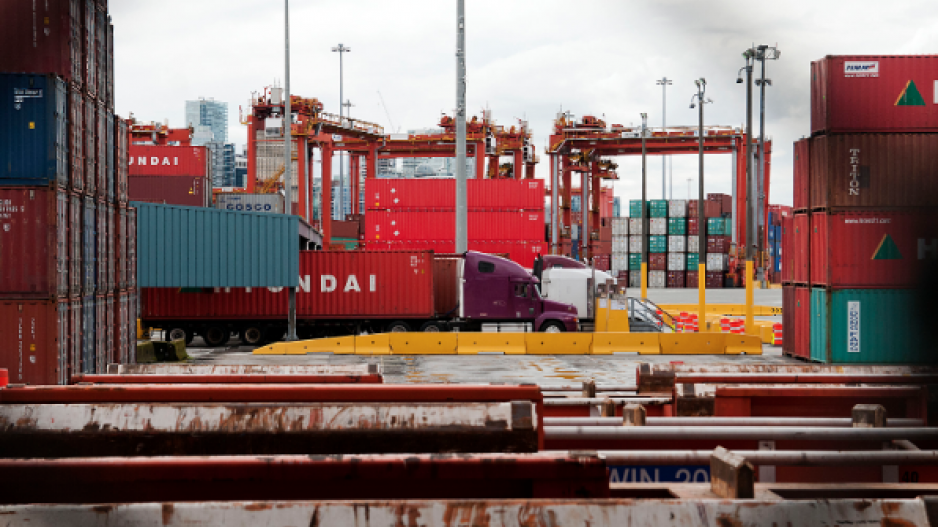Longshore labour turmoil snarling U.S. west coast ports could benefit B.C. as traders and ocean carriers seek delivery options in the US$4 trillion global container-shipping sector.
That and other transportation issues will be top of mind at the Cargo Logistics Canada conference being held January 28 and 29 in Vancouver.
Stephen Flowers, the president of UPS global freight forwarding, said the ongoing port congestion caused in part by protracted longshore contract negotiations on the U.S. west coast is a major issue facing global cargo logistics companies.
Negotiations between the Pacific Maritime Association (PMA) and the International Longshore and Warehouse Union (ILWU) began in mid-May 2014. The industry was initially hopeful of a relatively quick resolution but that has proved elusive.
Union work slowdowns coupled with decreasing cargo volumes are squeezing American west coast terminals, which are shelling out more for labour in the slowdowns but watching as more container business heads to ports in Mexico and B.C. and along the U.S. east coast.
According to a January 12 PMA press release, the ILWU slowdowns “have methodically reduced terminal productivity at the five largest ports on the West Coast [and] operations are approaching complete gridlock.”
A January 13 Journal of Commerce story added that “terminal operators are paying 15% to 20% more man-hours than they did in the same weeks last year, but cargo volumes are up only about 1% to 3%.”
According to U.K.-based Transport Intelligence Ltd. numbers, east coast U.S. ports like Norfolk and Charleston increased container TEUs (20-foot equivalent units) 12.3% (to 203,276) and 14.4% (to 141,956), respectively, in December 2014 over the same month in 2013. Meanwhile, the Port of Los Angeles increased TEUs by 0.8% (to 658,567) and the ports of Tacoma and Seattle suffered declines of 8% (to 140,218) and 19% (to 100,676), respectively.
TEUs at the Port of Prince Rupert, meanwhile, jumped 50.6% in December 2014 (to 60,232) compared with December 2013.
Port Metro Vancouver, in the midst of reforming its container truck licensing system, faced an 11.3% drop (to 218,459) in TEUs in November compared with November 2013.
Flowers, who is attending the convention as a panel member speaking on global trade trends, said the West Coast congestion is creating an issue “and an opportunity” to work with container cargo customers now facing delays of anywhere from two to five days at Prince Rupert to between 22 and 25 days at Seattle and Oakland on alternatives that include redirecting product to other ports and using air freight and other transportation options.
The opportunity turned into a challenge last summer for terminal operators in B.C. dealing with a surge of containers being redirected north from U.S. ports by shippers anticipating a ports shutdown.
An estimated 300% jump in containers headed south from Centerm resulted in terminal operator DP World (Canada) Inc. notifying customers thatit would no longer accept containers headed for the U.S. via direct transfer to rail until backlogs had been cleared.
Flowers said another major cargo logistics trend is the continued shift in major shipping lanes as lower costs and rising domestic demand in emerging Asian countries like Vietnam and Indonesia lure manufacturing away from China. More manufacturers are also looking to Mexico as the push in North America for regionalized production increases.
Cathy Robertson, a senior analyst for Transport Intelligence who is also speaking on global trade trends at the conference, added that aside from the congestion “mess” at U.S. ports, the booming US$1 trillion industry e-commerce sector led by such non-traditional logistics suppliers as Amazon (Nasdaq:AMZN), Alibaba (NYE:BABA) and eBay (Nasdaq:EBAY) is a huge story in the cargo logistics world.
A recently released Transport Intelligence report points out that while North America was the largest e-commerce market in 2014, Asia Pacific is expected to surpass it in 2015.




